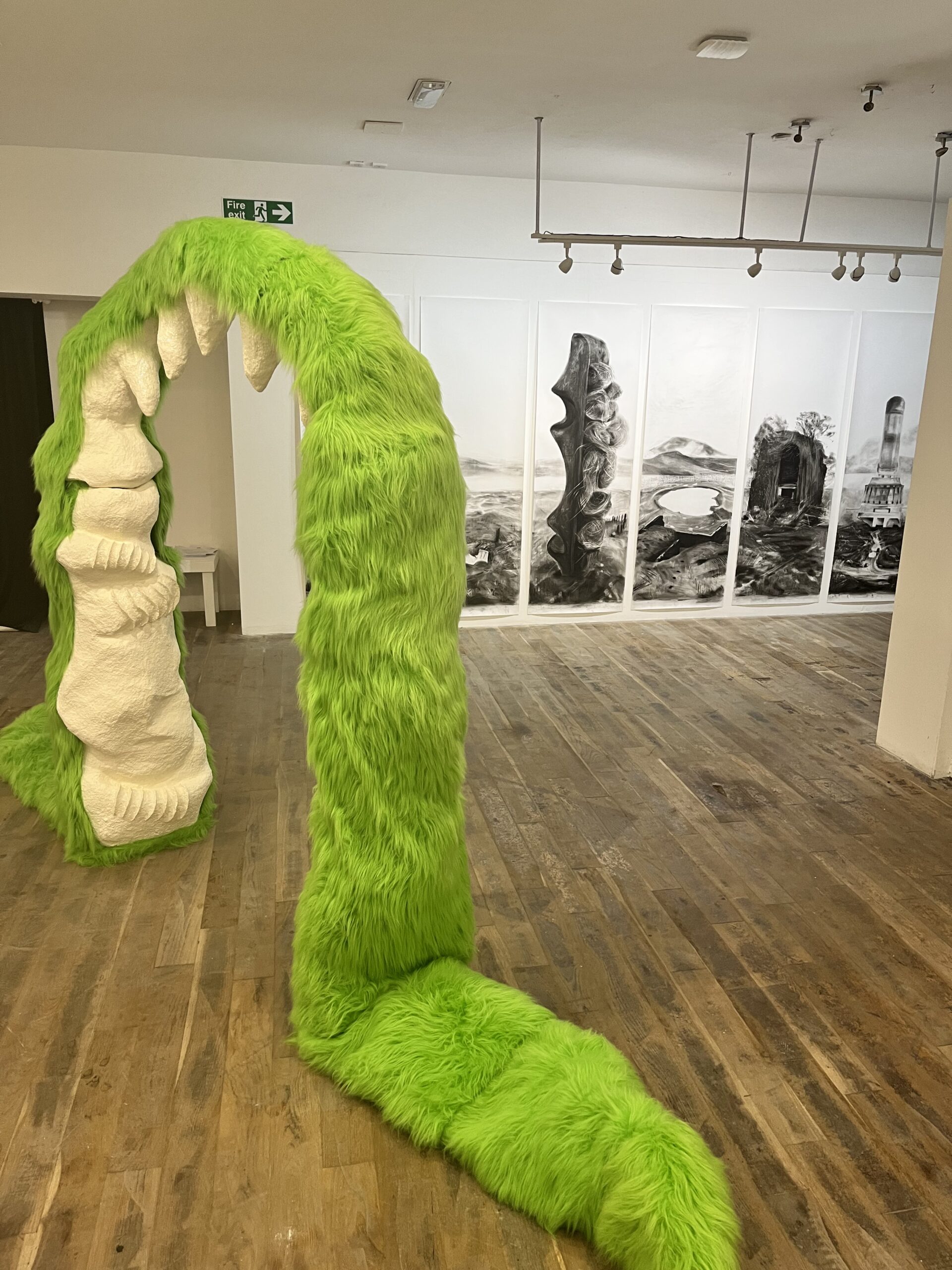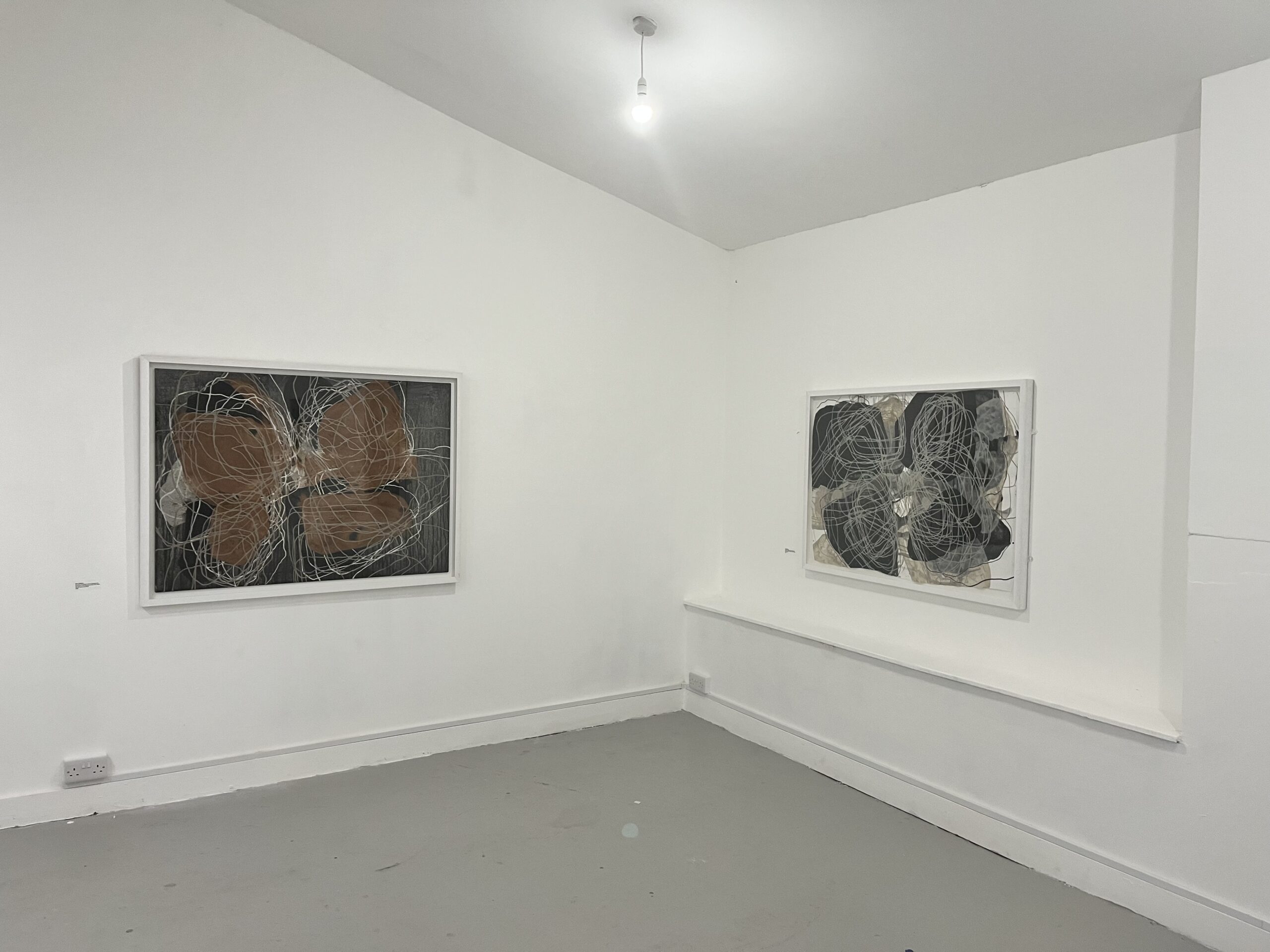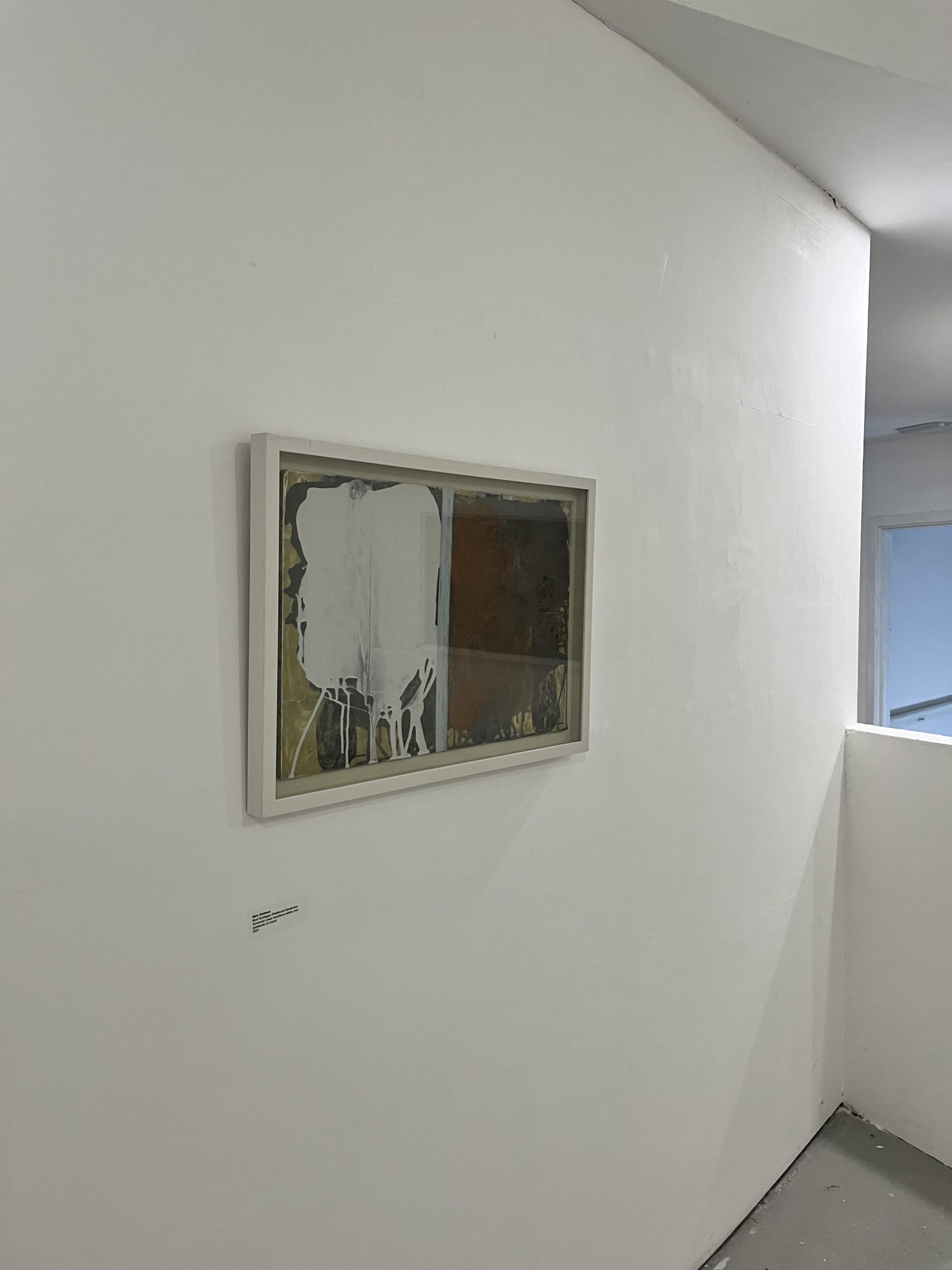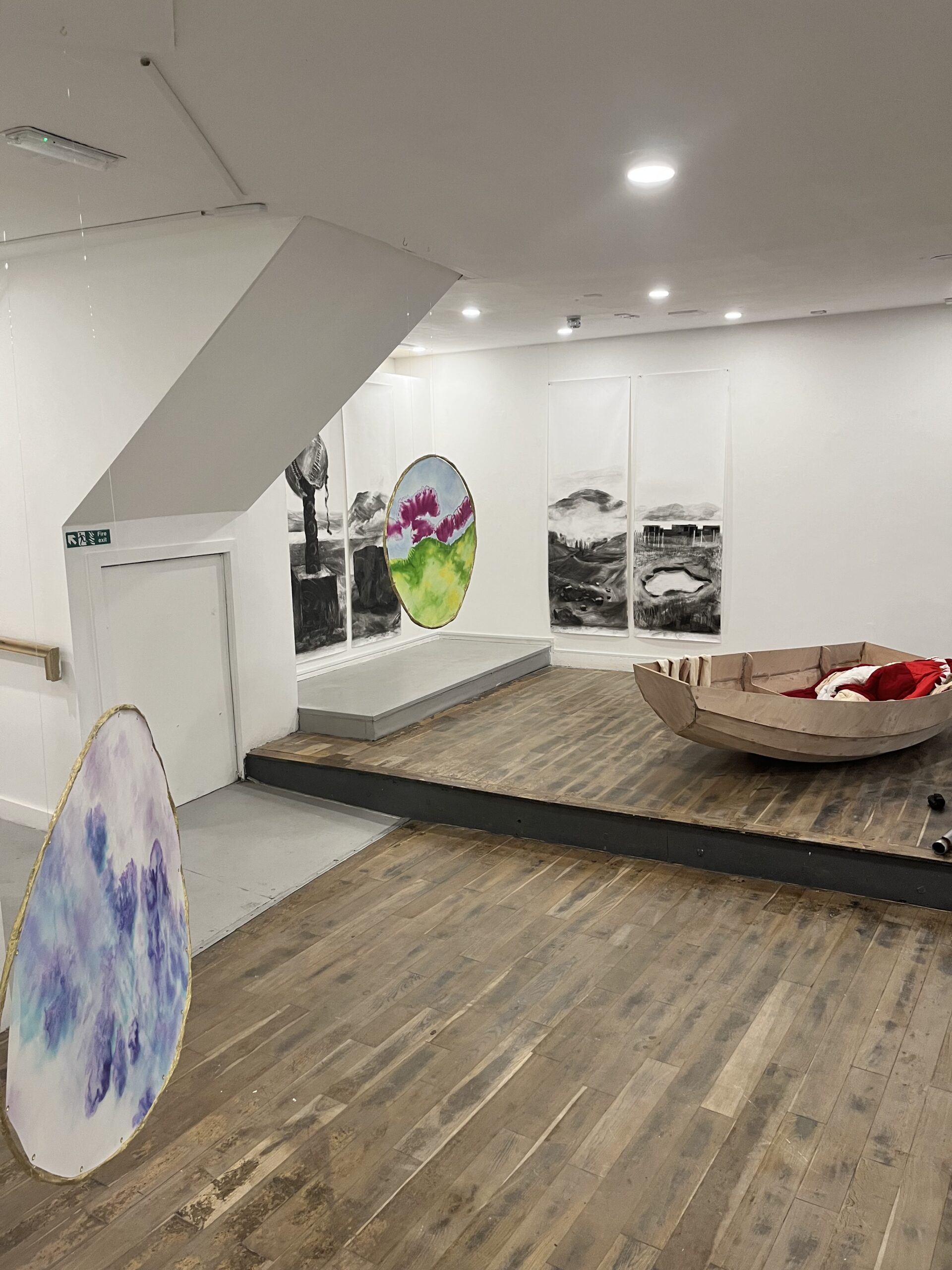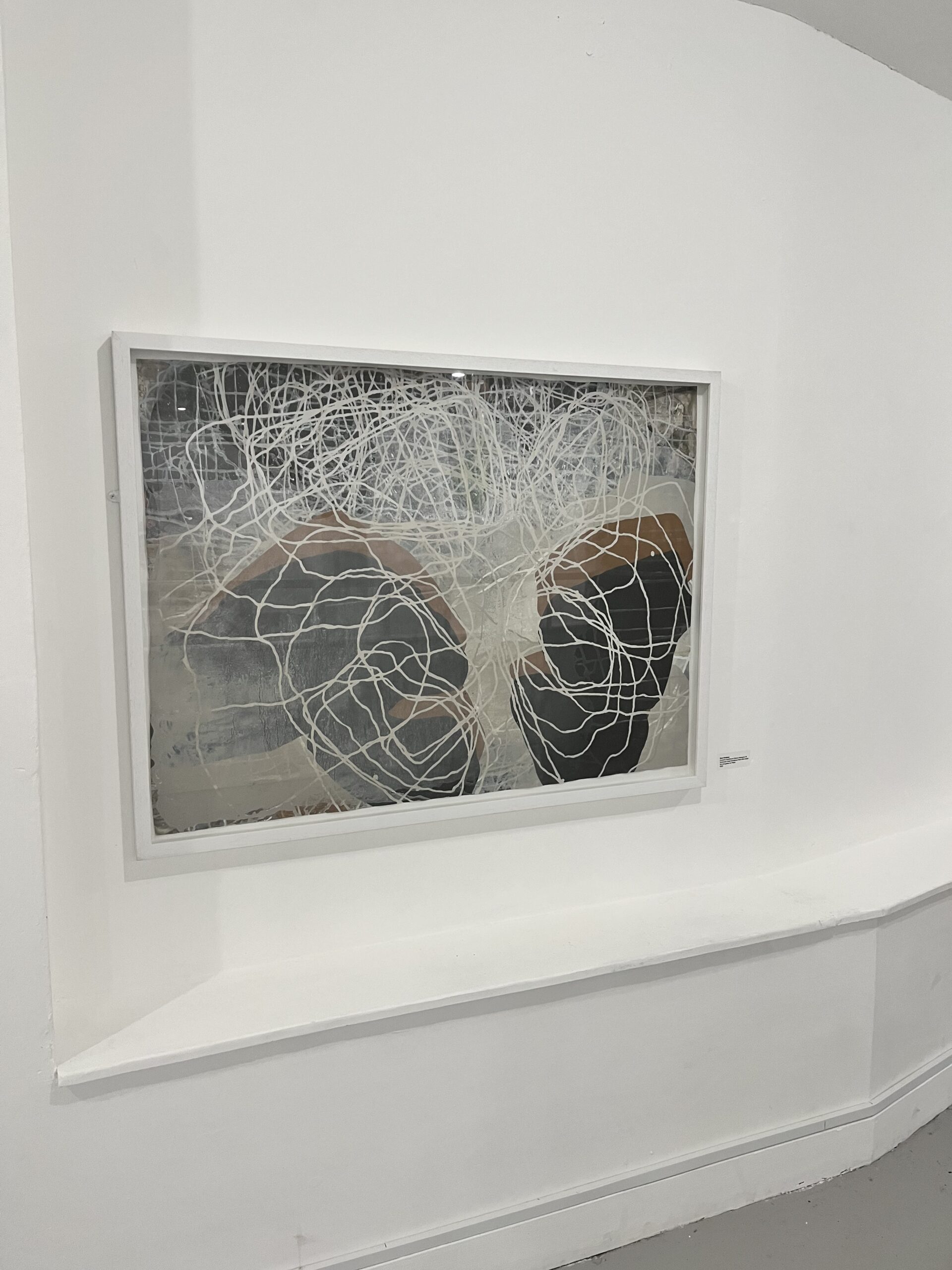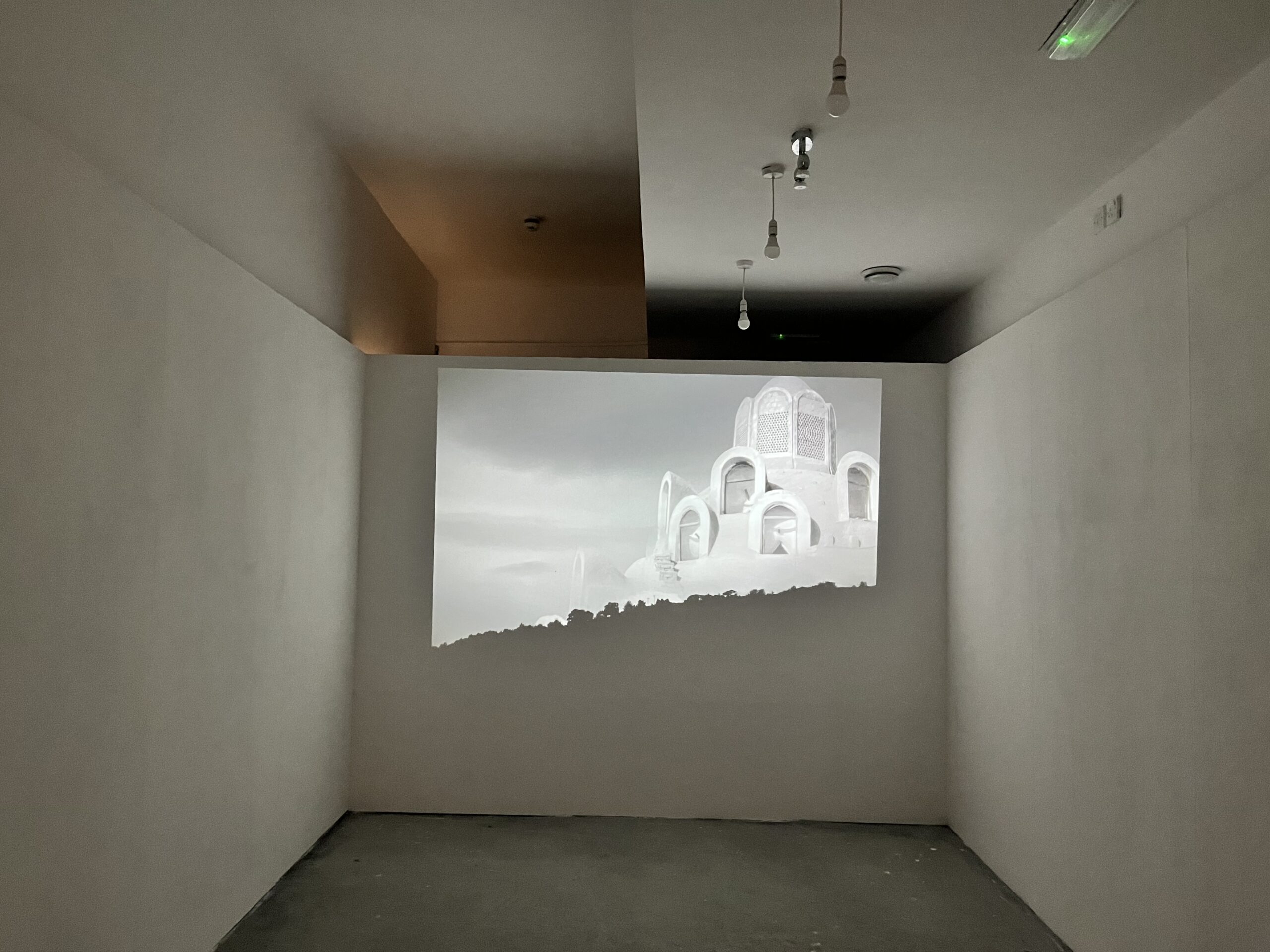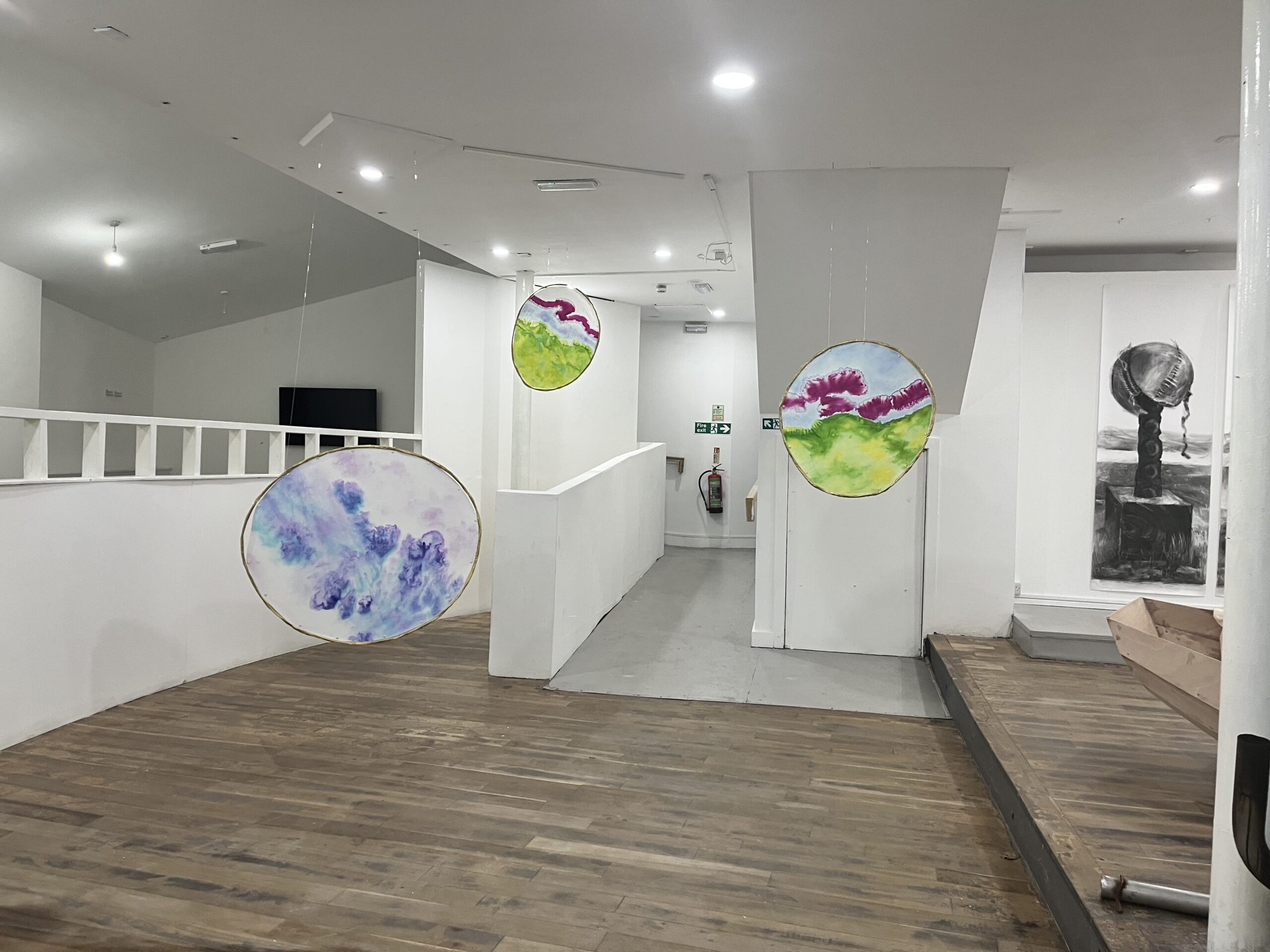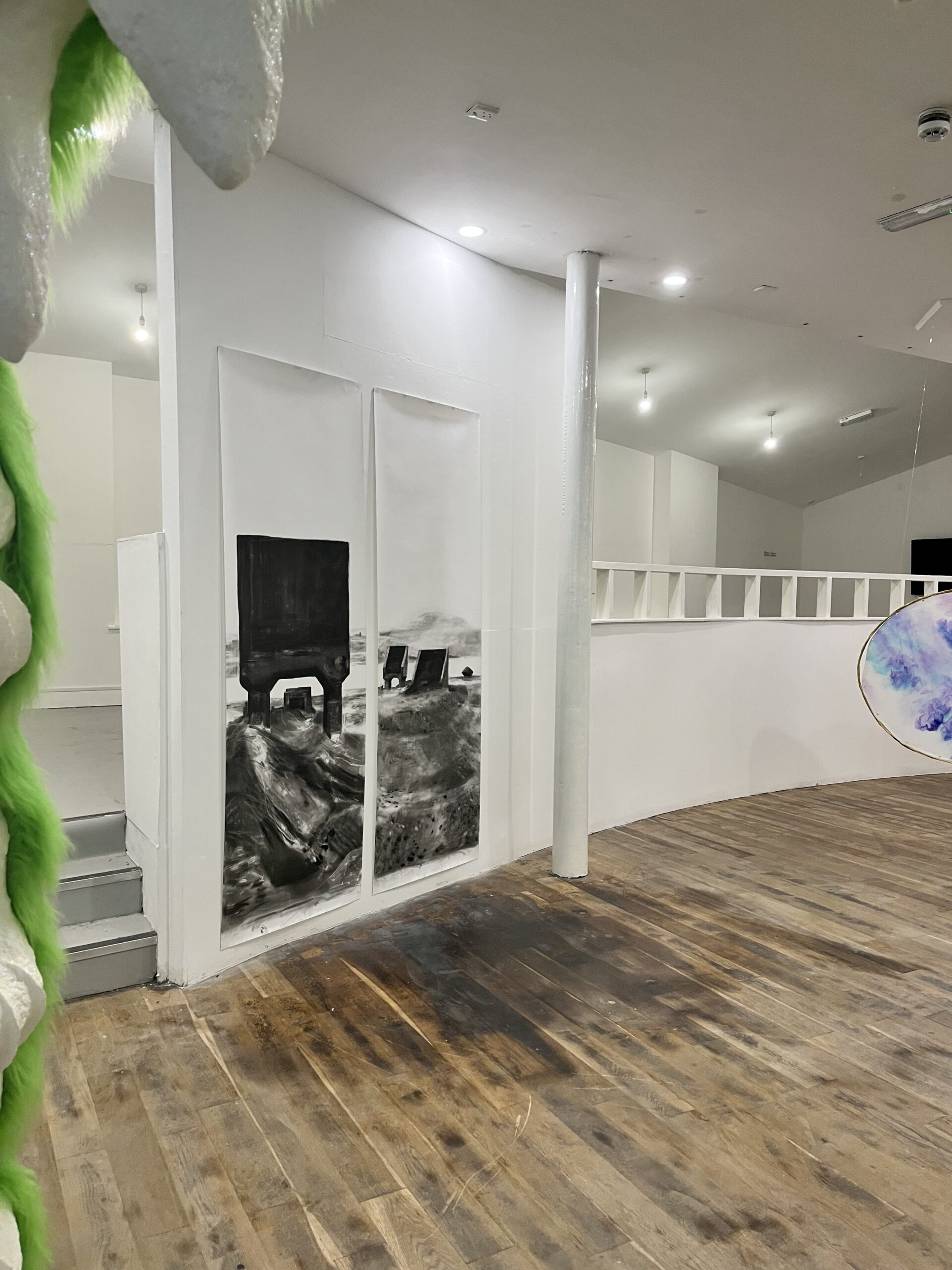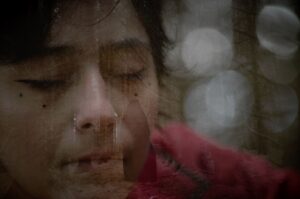Memory into landscape
Gallery 1 + 2
Lucien Anderson | Caroline Bugby | Isabella Campbell | Sara Dudman | Penny Hallas | Connie Hurley | Nikta Mohammadi
Preview: Friday 18th November, 7pm
Exhibition continues until 23rd December
Gallery open: Weds – Sat 11am – 9pm
Elysium gallery presents seven artists who explore the land by investigating the relationship between landscape, history and identity through their personal experiences, perceptions, and narratives, to demonstrate a unique investigation into the subject of landscape: especially how the past imprints itself on the present in our physical environments.
Memory into Landscape considers our relationship to time and place as layered and complex. Spatial encounters with landscape can embody and activate an array of perceptions, processes, events, memories and experiences whose origins lie deep in time, evoking clues to an ancient history of stories, myths and legends that reverberate through to the present-day.
Artists
Lucien Anderson & Connie Hurley
Lucien Anderson’s (b. 1992, Huddersfield) works are loosely allegorical, sitting as artefacts imbued with a personal narrative. Excited by everydayness, belonging and transience, the evocative forms of houses and boats are recurring motifs. See-sawing between purpose and whimsy, any implication of function in Anderson’s work is undermined by an arbitrary playfulness. Considering scale, both physical and in terms of ambition, Anderson is interested in the notion of “the endeavour”, pioneers at frontiers, survival, quiet resilience, and the myth of the cowboy.
Incorporating quotidian objects and materials, his work is honest, and his visual language is muted.
Anderson rejects new material, instead he selectively scavenges from what he has around him. Through this, and the honouring of traditional techniques, there is a relinquishment of ego. Anderson accepts and embraces the inherent properties of the material he selects; he gives to it and it to him.
Channelling the spirit of the storyteller, Connie Hurley (b. 1994, London) makes work that moves between sculpture, curation, experimental autofiction, friendship and facilitation. With a practical curiosity and hands on learning approach, she is interested in DIY methods of making, gendered social support structures, lore and love with a particular focus on imagined histories, nonliterate ways of archiving and evidence of existing. For now, Connie is excited by sharing and regularly works with other artists to produce collaborative work, which has previously taken the form of publications, events, objects, club nights, songs, conversations, and exhibitions.
Born out of a shared interest in outdoor adventure, storytelling and ‘giving it a go’, for Memory into Landscape Anderson and Hurley propose Twice more and then never again. Inspired by the watery sunken history of Doggerland (6500 – 6300 BCE), 1970s alternative modes of living, and Swansea’s impending flooding (predicted by 2050), Anderson and Hurley are building a bed boat to escape in.
In ‘On Time and Water’ Andri Snær Magnason describes how geological time is catching up with human time, and significant geological moments (e.g., the melting of Iceland’s last glacier) are now occurring at a dramatically accelerated rate. These events which once lasted thousands of years now unfold in a single person’s lifetime. Rather than being imperceptible, they now inform complete human narratives, beginning middle and end, they become anecdotes and allegories, informing stories passed down through the generations. Marrying this thought with Kurt Vonnegut’s idea of time as ‘a mountain range stretched out before us, with all moments visible at once and indefinitely’ Anderson and Hurley have been thinking about flood. Looking forward, we see what is to come with climate change, and looking backwards we see the lost and sunken Doggerland – this means an epic flood is both imminent and already here.
As the storms starts in the distance, we load the bed boat, grabbing our dry socks, our quilt to sleep under, we are ready to move on, for the flood to come and the rain to begin, be engulfed again
The boat sits quietly between myth and artefact as a speculative way to survive the future history of now. Like nomadic doomsday preppers or wild adventurers from the Golden Age of Exploration, the boat is packed with all that Anderson and Hurley consider fundamental for life at sea; basic camping equipment, tinkered tools, a rudimentary wooden bed, a quilt, and hand knitted socks – stiff with salt water. All of this is made by hand or scavenged and packed into the hull of their 8ft boat. These objects embody the cyclical nature of living in the floodlands – between waterscape and landscape, day and night, wet and dry, warm and cold. This rhythm is an echo of the flood waters – rising and receding, floating, and grounding.
Caroline Bugby
Caroline Bugby makes work that uncovers geological and archaeological stories from the landscape of Kent where she lives. Her sculptures and installations are a playful and poetic exploration of the deep-time history of the landscape. Lately Caroline has been considering the Cretaceous period, 100 million years ago, which formed so much of her local landscape. It was a time of heat, when much of the UK was underwater, submerged by a warm shallow sea. These conditions formed the huge swathes of chalk that lie beneath the rolling downs characteristic of the South of England.
Outrageous Cretaceous is a sculptural portal – a strange archway to be traversed by the viewer. This semi-abstract form is both chalky, green topped landscape, and cartoon monster baring stalactite fangs. From within the sculpture comes a voice, a sound recording that relays the incredible alchemical processes that have occurred to create chalk landscapes over millions of years. Suspended in the space are vivid circles of swirling colour, Geology Slices, each re-creating a section of the geological map; the green representing the chalk.
The sound piece which forms part of the installation reflects on the transformative processes which created the chalk – from algae to ooze to the crumbly white material we are so familiar with today. Concerns about climate change and habitat loss in our current moment are alluded to by looking to the conditions of the Cretaceous, with its melting ice caps, rising sea levels and mass extinction. As such, the Anthropocene might be considered a shocking, or outrageous, Cretaceous. The plants and butterflies whose names are listed like an incantation at the end of the portal’s speech are all dependant on chalk grassland for their home. This delicate habitat is becoming increasingly rare, with 80 % lost since the Second World War.
Visitors are invited to engage with the portal, by crossing this bizarre threshold and considering our place in the very long and very grand narrative of the rocks under our feet.
The sound component to ‘Outrageous Cretaceous’ was written by Caroline Bugby and performed and recorded by visual and voice artist Bo Lanyon.
Isabella Campbell
Based in Wales, Isabella’s practice has been fundamentally influenced by the rural landscape of West Wales where she was raised as a child. Following the themes of temporality, perception, and sense of place, her methodology follows similarly to Japanese practitioners and Impressionist painters: conveying the experience of place.
‘TEIFI is a long-term body of photographic work that concerns the phenomena of a river that I live beside in rural Wales. The work has been made sensitively in response to the environment and has become a series of painterly meditations, expressing the river’s timeless environmental energies in order to convey the same experience I had when making it, revisiting it regularly over every season, over many years.’
Sara Dudman
Sara Dudman (b. 1964, East Anglia), is best described as a ‘seeker-sharer’. She works alone and in partnership with others. Her practice embraces walking as research, foraging, paint-making, painting, drawing, curating, devising and leading locality-based artistic projects and creating participatory encounters. Her work stems from the urgent need to better understand and review our relationship with the world and its myriad of inhabitants with their interwoven relationships.
She is a contemporary hunter-gatherer, seeking not only the raw materials with which she makes paints and pastels, but searching out the stories and histories which every footstep reveals, with help from companions on her ‘Nomadic-Sporadic’ walks. She exhibits extensively in the UK and beyond and works in partnerships to lead interdisciplinary and collaborative landscape-based projects. Since early 2020, the locus of her practice has shifted from remote and wild residencies, to a reacquaintance with her own locality in the Southwest of England. Sara has been Artist-in-Residence with the Chase and Chalke Landscape Partnership Scheme since January 2022.
The paintings in the exhibition use the most ancient of painterly processes to gently interpret natural and human-influenced changes in coastal environments, specifically the Severn Estuary. Undertaking an itinerant, sporadic residency along the Somerset coast, Sara collected low-tide muds and cliff-face rocks, inviting questions and playful encounters with intrigued beach visitors. The dialogue, surprises and social interactions have synthesised with her own studio-based processes to help shape the works. Pigments collected during the walks are labelled with the exact location where they were found, resulting in a collection of colours and textures, each with a rich, place-specific story, to be woven into the paintings.
These works have a pulse. They breathe. At times anthropomorphic or shroud-like, the paintings echo the ocean as ‘the lungs of the planet’ and layers of sedimentary rock as the graveyards of previous generations of organic life. The rock recurs as a motif and metaphor for permanence and impermanence simultaneously. The dynamic equilibrium of marine and shore ecology, the deep time compressed within the layers of rock and the continual process of change and erosion which defines the ecotone of this fragile coast all contribute to the conversations within each work.
The laborious process of creating these paintings which are simultaneously carefully crafted, yet also unpredictable and fluid, reflect the human relationship with coast. Sara works in the studio: part-artist, part-scientist, part-geologist, part-cook, soaking, grinding, sieving, drying, mixing, pouring, making.
Penny Hallas
Penny Hallas maintains drawing and painting at the heart of her practice, whilst incorporating video, photography and sculptural elements, often in the form of found objects.
The Brecon Beacons National Park, Wales, where she lives and works is typically seen as a site of natural beauty, yet it is peppered with the scars and artefacts of human activity from ancient times through the industrial revolution to the present. Her practice includes walking the landscape and watching out for remnants of such activity, many of which, having passed through the transformations of time and chemistry, have acquired a certain aura, almost like ritual objects. The re-contextualised objects and structures, set in their related landscapes, evoke the deeper geological time of the underworld and the relentless exploitation of its hidden resources. At the same time, as discarded and forgotten leftovers, their own damaged nature become emblematic of the accelerating violence committed against nature by human action and movements towards looming catastrophe.
As a child, raised in Leeds, Penny was given an 1824 Leigh/Clark Myriorama comprising a series of interchangeable panels that can be rearranged to create a near-endless variety of landscapes. Myrioramas were a popular entertainment and means of learning about aesthetics around 1800, just as tourism was developing and as ideas of picturesque and sublime were being challenged by profound changes due to industrial and agricultural revolution. But as well as determining how the landscape is conceived & perceived, art can also subvert tendencies to ‘other’ the land. Re-purposing this historic format in Connectives (2020) allows multiple ways of reflecting on and sharing personal, physical and emotional encounters with a very particular locality. Combining and intermingling narratives and deliberately introducing elements of dissonance and misfit is a way of extending conversations about value, both historically and in terms of future action in a time of environmental and ecological crisis.
Nikta Mohammadi
Nikta Mohammadi is an Iranian artist and producer based in West Yorkshire, working across moving image, performance, sound, and text. Her practice is rooted in dreams. It examines the relationship between personal and political, outside, and inside, private and public, documentary and fiction. She works with themes of displacement and loss with a playful approach to how language is constructed and used in her work. Currently, Mohammadi is building a body of work that investigates the British rural landscape, challenging its image as an untouched and unchanging space, where time stands still, incorporating literature, myths and rituals from Iran and Britain with an interdisciplinary formal approach. Through this body of work, she wants to reflect on her fragmented living experience as an outsider.
‘Windcatcher & Gargoyles follows a rambler up and down a staggered, twisting path. It uses
horror folklore as a lens to tell the story of this rambler on her strange and uncanny journey. I took my starting point from Zār, a custom originating in the cultures of the Horn of Africa and Middle East, which personifies wind(s) as a spirit(s) that can possess humans. Drawing on Iranian and Islamic horror texts, I juxtaposed this research with several Yorkshire place-tales, working through a psychogeographical framework. I created the work predominantly using still photographs which contrast with video, animation, performance and dance sequences.
More than anything, the work centres on an ‘othered’ subject. It is a reflection on the experience of being an outsider. Gargoyles are in-between creatures, monsters/humans caught inside the walls, connecting our world to the shadow one; Our rambler embarks on a journey through geography and time, spirit, and material. Through the interactions of this rambler and her environment, I wanted to create a crooked mirror reflecting the ghostly imprints of the past, migrants create on foreign landscapes.’
Selectors
The artists for this exhibition were selected by Kathryn Campbell Dodd and Dr Robert Newell from a longlist of over 500 artists who sent in proposals around the theme of Memory into Landscape.
Kathryn Campbell Dodd is an artist and the Programming and Partnerships Officer for National Trust Carmarthenshire and Ceredigion.
Dr Robert Newell is a painter, a member of the Royal Cambrian Academy and former Senior Lecturer at Swansea College of Art.
Image: Nikta Mohammadi
